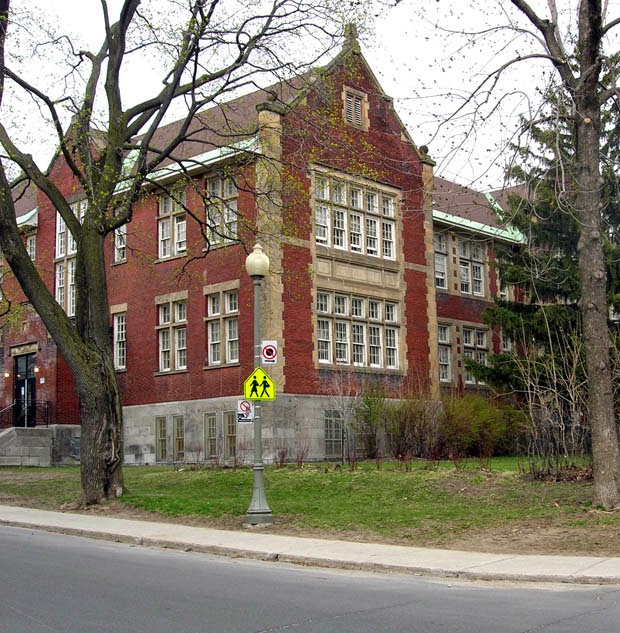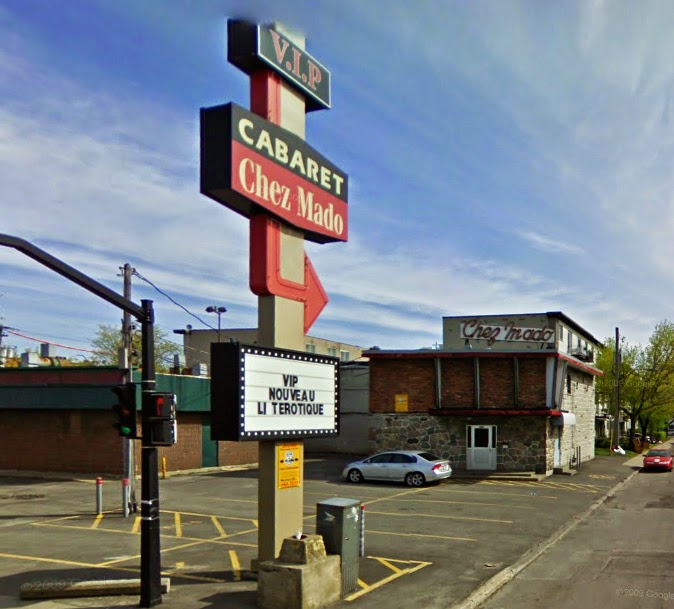What started out - and should have ended - as an innocuous street bravado conflict on a summer night in St. Laurent ended up leading to two deaths and much more collateral damage.
![]() |
| Wendell Small, 21, killed |
The story begins when Philip Bird, a 22-year-old from Pierrefonds, met a woman named Heidi Koula at a park and offered to drive her back to her home in St. Laurent at about midnight on August 12, 1985.
![]() |
| Du College metro |
Not far from their destination, Bird stopped his
1976 Pontiac Parisienne at a red light outside of the metro station at
Decarie and Du College.
Many people were outside at the corner that night, including a bunch waiting for the 118 bus.
Carl White, a former boxer, stepped to the car to chat with Koula, who he knew.
Their little chat left Bird - who had consumed six beers and smoked hashish - irritated and he got out of his car to confront Wright and a crowd of mostly young black males.
"I can take that girl away from you," Wright told Bird.
"Fuck you boy," replied Bird, a phrase which carried a racist overtone.
Shawn Rogers intervened to advise Bird to get back in his car.
But then White tossed a plank from a nearby construction area at Bird's car.
Rocks and a steel bar were also apparently tossed at his car.
Humans, as we know, don't much enjoy having their car attacked and Bird was no exception.
He drove off but veered around to take a U-turn to return to the scene.
![]() |
| Magalie Joachim, 18, killed |
Koula, still in the car, asked to get out but Bird ignored the request, so she helpless covered her eyes as he accelerated towards the crowd.
Bird's idea was to scare the people who had taunted him and attacked his car by slamming on his brakes just in time to avoid calamity.
As we have
seen elsewhere in this city, speeding towards somebody and stopping just before impact is a lousy idea idea that can easily lead to tragedy.
Before he came close, one man entered the road wielding a sign he had picked up and was ready to toss, as if expecting Bird to come around. The man dashed out of the car's path when he saw it speeding towards him.
Bird's lawyer later claimed that the car failed to stop because it skidded over the assorted debris that the young men had tossed at his car.
Bird drove straight into the crowd,
killing Magalie Joachim, 18, and Wendell Small, 21. Sophia Brown, 7, and Mandy Menshick, 14, were
seriously injured as well.
![]() |
| Philip Bird |
Joachim was not at all involved in the dispute and was only there because she had driven to the metro to drop friends off after watching a fireworks display.
Small had been at a nearby restaurant with his younger brother and he left to go out side in order to talk to a girl.
Bird came out and expressed shock at the result of his recklessness.
Witnesses Christine Vibert, Alphonsus Linthorne, Gisele Gagne and Shawn Rogers were among the many people who saw the awful event up close.
The two bodies remained pinned under the vehicles for three hours after the incident.
Bird was brought to prison and was originally to be charged with first degree murder but a jury reduced that to manslaughter and criminal negligence. He was sentenced to 7 1/2 years but even that was further reduced.
The story does not end there, however.
Sean Small, 19, was also on the scene and saw his brother killed.
He was so shocked that he was unable to speak to utter a word to his mother Margery Marshall to recount that his brother had been killed.
Sean's life did not go well after that incident.
Justice Dionysia Zerbisias later called Small a hardened unrepentant and violent criminal.
Almost exactly 13 years after his brother was killed, Sean Small was walking in NDG with his new girlfriend Tina Diaz on August 22, 1998.
![]() |
| Koulas, seen in a recent photo, was trapped in the car |
They had been arguing loudly inside the
Stripes bar on St. James St. W and continued their bickering in the street walking home.
Police asked them about their dispute but then allowed them to continue to their home on Beaconsfield.
Once inside Sean Small, by now 32, jabbed Diaz, 18, in the chest with a sharp object.
He brought her to St. Mary's Hospital in a taxi at 4:30 a.m. and left.
She died 10 hours later, as surgery to repair the perforation in her heart failed.
She refused, or was unable, to report what had happened.
On January 3, 1999 Sean Small was sentenced to life in prison for murder with a minimum jail time of no less than 10 years in prison, so there's a good chance that he is out of prison now.
The only glimpse of goodness that came out of this series of disasters? A
charitable foundation to help Haiti was later launched in the memory of Magalie
Joachim.
































.jpg)





